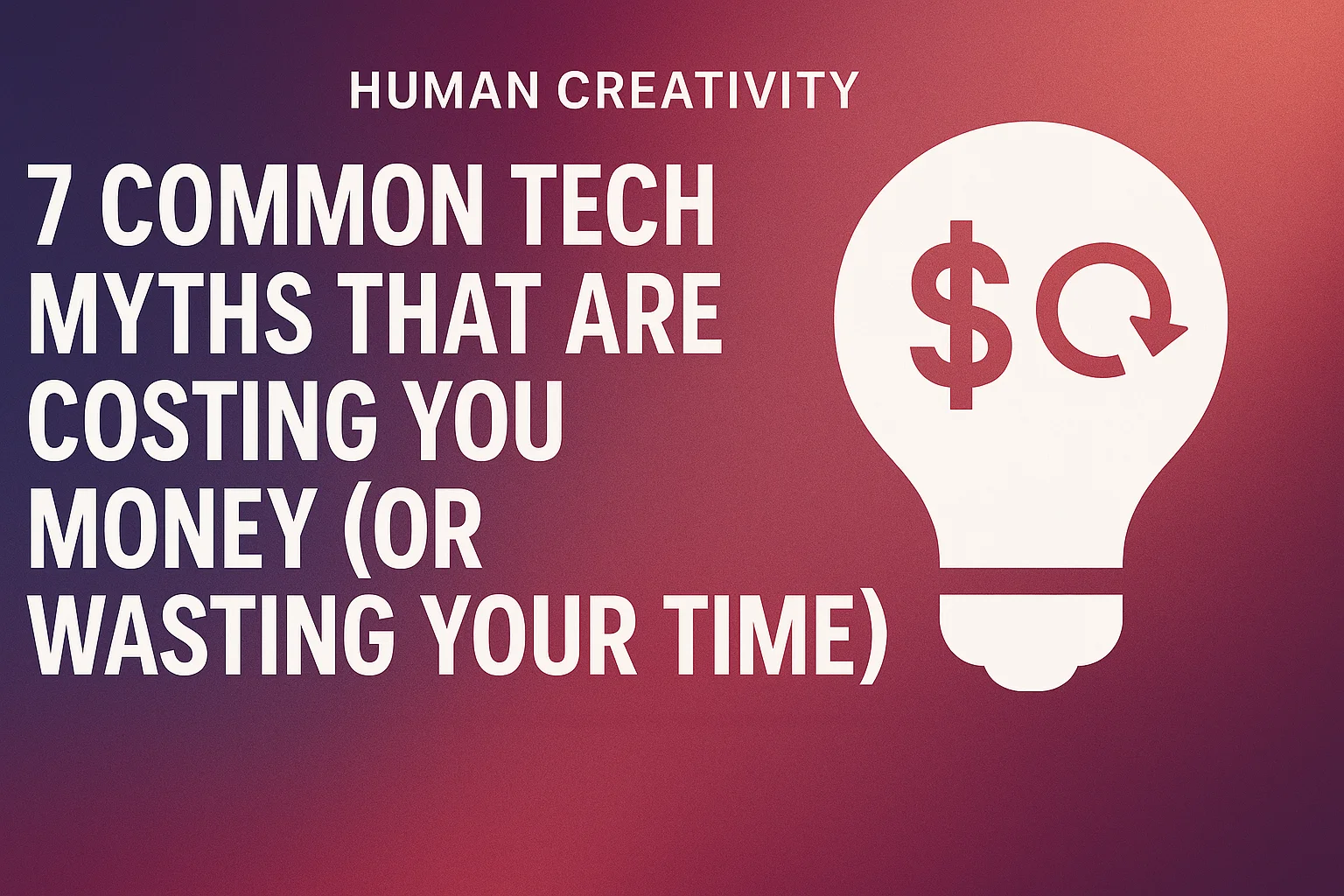The world of technology is filled with “common knowledge”—bits of advice passed down from friends, family, and even outdated tech articles. The problem is, many of these “facts” are completely wrong. Believing them can do more than just make you look misinformed; it can cost you real money, shorten the lifespan of your expensive devices, and waste your valuable time.
Let’s bust seven of the most persistent tech myths that are still floating around in 2025.
1. Myth: “More Megapixels = A Better Camera.”
This is perhaps the greatest marketing trick in smartphone history. We’re trained to see a 108MP camera and assume it’s better than a 12MP camera. This is rarely true.
- The Truth: Camera quality is determined by sensor size, lens quality, and software processing, not the megapixel count. A larger sensor can capture more light, which is far more important for good photos, especially in the dark. This is why a 12MP iPhone or Google Pixel photo often looks dramatically better than a 108MP photo from a budget phone.
- The Cost: You overpay for a phone with a high megapixel count, believing you’re getting a superior camera, when a cheaper phone with a better sensor would have served you better.
2. Myth: “You Must Drain Your Battery to 0% Before Recharging.”
This is a very old piece of advice that has caused the premature death of countless modern batteries.
- The Truth: This was true for old Nickel-Cadmium (NiCd) batteries, which suffered from a “memory effect.” Your modern phone, laptop, and tablet use Lithium-ion (Li-ion) batteries. These batteries hate being fully discharged. In fact, their lifespan is measured in “charge cycles,” and running one from 100% to 0% is the most stressful thing you can do to it.
- The Cost: By “properly” draining your battery to 0% all the time, you are actively reducing its lifespan, forcing you to replace your device or its battery much sooner. For optimal health, it’s best to keep it between 20% and 80%.
3. Myth: “‘Incognito’ or ‘Private’ Browsing Makes You Anonymous.”
Many people switch to Incognito mode thinking they are invisible online. This is a dangerous misunderstanding of what the feature does.
- The Truth: Incognito mode only does two things: it deletes your browsing history and cookies from your local device after you close the window. It does not hide your activity. Your Internet Service Provider (ISP), your employer, your school, and the websites you visit can still see everything you are doing.
- The Cost: A false sense of security. If you need real online privacy from third parties, you need to use a VPN (Virtual Private Network).
4. Myth: “Apple Macs Can’t Get Viruses.”
This was a popular marketing slogan in the 2000s, and it has stuck around with surprising persistence.
- The Truth: Macs can absolutely get viruses, malware, and ransomware. While macOS has strong built-in security, it is not invincible. As Macs have become more popular, they have become a more attractive target for hackers.
- The Cost: Complacency. Mac users who believe this myth are less likely to be cautious about suspicious links or downloads, making them an easy target.
5. Myth: “You Need Gold-Plated HDMI Cables for the Best 4K Picture.”
Walk into any electronics store, and you’ll see HDMI cables ranging from $10 to $100, with the expensive ones boasting “gold-plating” and “oxygen-free copper.”
- The Truth: An HDMI signal is digital. It either works, or it doesn’t. As long as a cheap cable is certified for the speed you need (e.g., “High-Speed” for 4K), it will deliver the exact same picture and sound quality as a $100 cable. The “gold” is just marketing.
- The Cost: You waste $50 (or more) on an expensive cable that provides zero performance benefit.
6. Myth: “Leaving Your Phone Plugged in Overnight Destroys the Battery.”
This myth is related to #2. People worry that “overcharging” will harm the battery.
- The Truth: Modern smartphones are smart. They have built-in charge-protection circuits. Once the battery hits 100%, the phone stops pulling power. Many phones also have “Optimized Charging” features that learn your sleep schedule and charge the phone to 80%, then top it off to 100% just before you wake up.
- The Cost: This myth just causes unnecessary anxiety and inconvenience. It’s perfectly safe to plug your phone in and forget it.
7. Myth: “Pressing ‘Refresh’ on Your Desktop Speeds Up Your PC.”
We’ve all seen someone nervously right-clicking and hitting “Refresh” over and over, as if it’s a magic “go faster” button.
- The Truth: The Refresh function simply redraws the icons on your desktop. It does absolutely nothing to your system’s RAM, CPU speed, or application performance.
- The Cost: This is a pure waste of time and a digital placebo. If your computer is slow, the only things that will help are closing programs, checking for malware, or restarting it.
